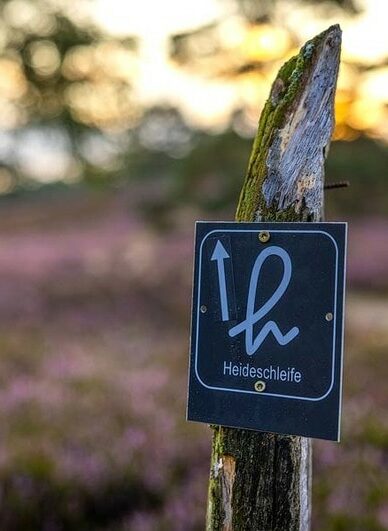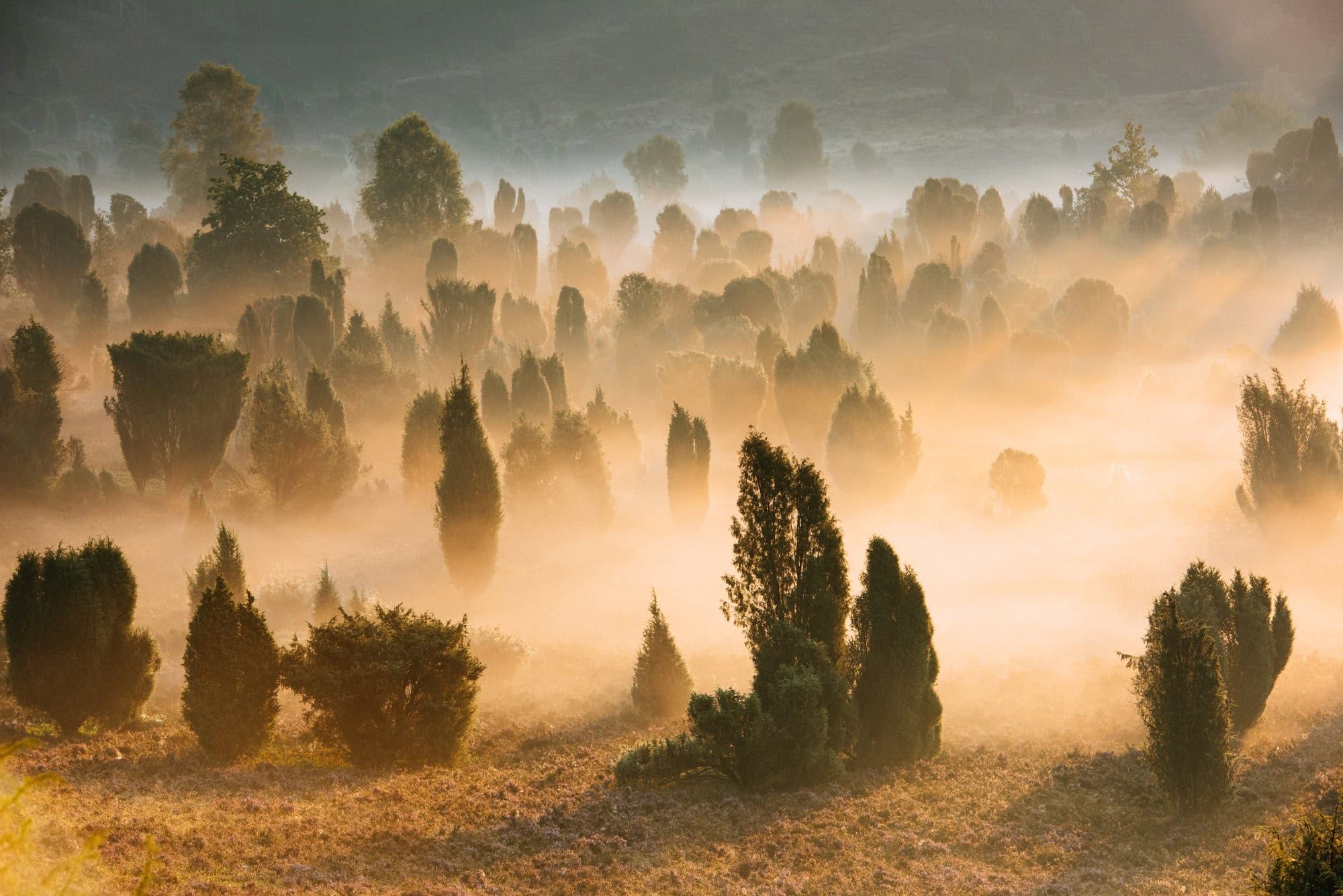Would you like to experience the Lüneburg Heath in a very special way? Then we recommend you spend a few days hiking on the Heidschnuckenweg. These highlights await you here.
While the Lüneburg Heath dresses in muted colors, which are typical for Northern Germany most of the year, it throws on its most eye-catching outfit in the summer season. Violet is a color with meaning. It is considered a symbol of humility and penance as well as self-reflection. The violet in violets became a symbol of virtue and modesty in the Middle Ages. Violet, the tone of amethyst, is complex, layered and intricate in character, as well as in its symbolism. Today, purple also developed an esoteric or mysterious vibe. Here, in the Lüneburg Heath, this intense color is simply a signpost along the hiking route. Photo motifs and non-stop eye candy. And because of the heather blossom, there is a purple radiance over everything.
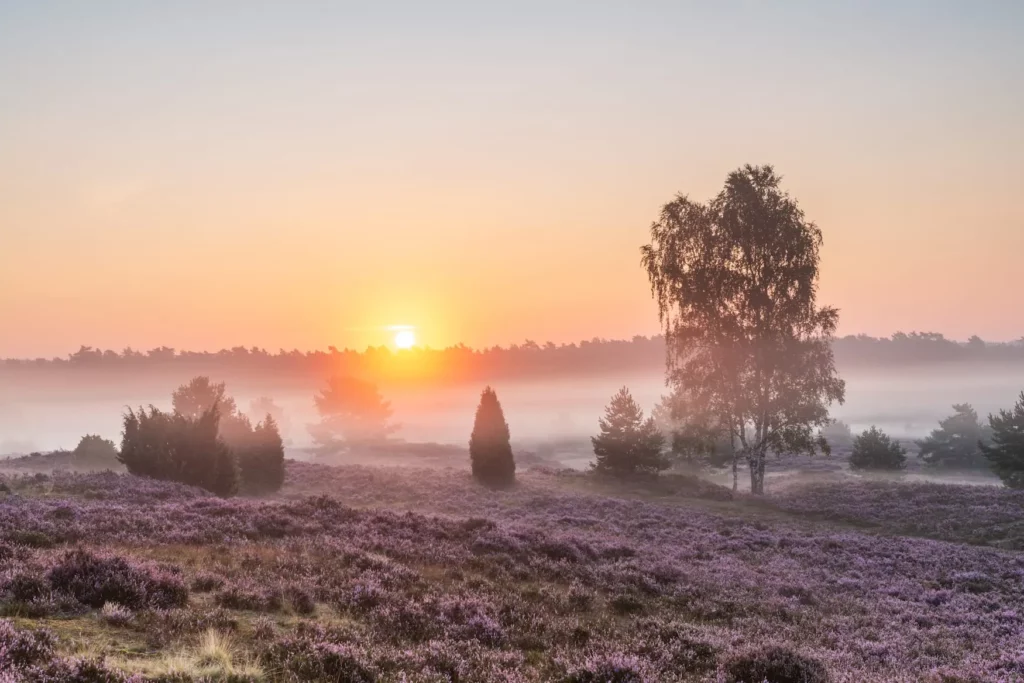
Disadvantage: It tends to get a bit crowded on the Heidschnuckenweg. Named after the breed of sheep that is often found here, the Heidschnucke, The 223-kilometer route runs from Hamburg-Fischbek to Celle. The Heidschnuckenweg is definitely one of the most beautiful hiking trails in Germany.
If you’re good on your feet, you can cover the distance in ten days. Here’s what we recommend: Pick out a few highlights on a long weekend and take it from there. It’s all a question of taste but, of course, we’ve already looked around for you.
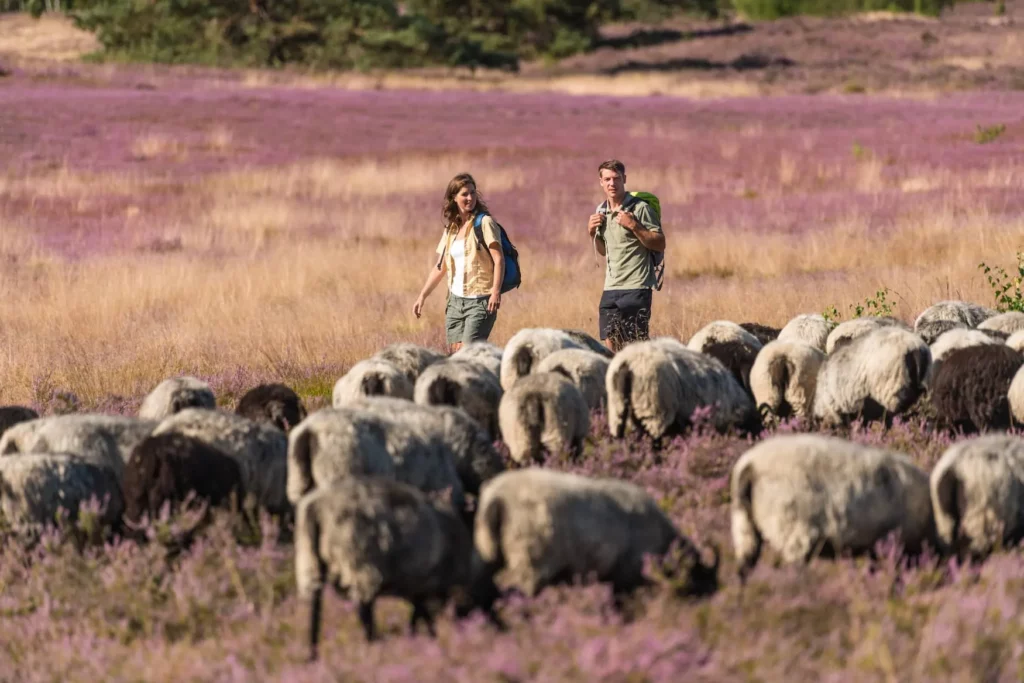
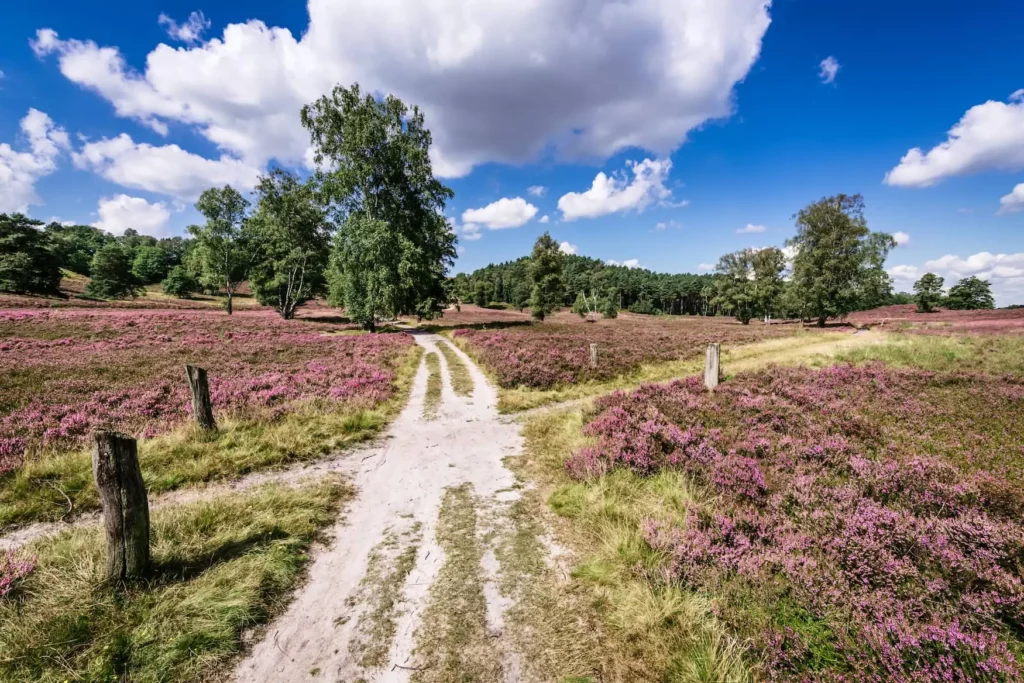
Juniper forest Schmarbeck
The extensive heath area, about 6 kilometers from the municipality of Müden, is considered to be the most impressive juniper forest in northern Germany with its numerous gnarled junipers. It is also mystical when the ancient juniper figures, which look a bit scary especially on foggy days, gently sway in the wind. This is probably where the nickname of the hiking area “Teufelsheide” – devil’s heath – comes from.

Radenbachtal with the Pastor-Bode-Weg
The Pastor-Bode-Weg is named in honor of the Heide pastor, Wilhelm Bode, who was not only active in the church, but was also very committed to nature conservation in the region at the beginning of the 20th century. The approximately 44-kilometer hiking trail connects Lüneburg with the Wilseder Berg.
River-Forest Adventure Trail along the Örtze
The river forest adventure trail is ideal for families. Because there is so much to discover along the way. For example, the water mill in Müden. The Örtze is dammed there in order to use hydropower to generate electricity. That has never been more impressive and important than today. Numerous species of fish can also be observed in the Örtze from big loach to brown trout. And so that the mill weir is not an obstacle to the migration of the fish, there is a flood channel. It’s like a diversion, a kind of stream that allows the fish to find their spawning grounds. There used to be salmon here, by the way. However, they have been gone for centuries but are now slowly being reintroduced by humans in the hope that the species will feel at home here again.

Wilseder Berg
The summit of the Lüneburg Heath is 169 meters high and is a relic of the Ice Age. Whoever travels here also travels back in time a little. Because in Wilsede, the place at the foot of the mountain, there is absolute peace. That may be because there are only a handful of residents in this romantic heathland village. It’s that or the fact that you can only get around by horse-drawn carriage, bike or on foot – because cars are forbidden. The Heidschnucke also feels particularly at home here and we can understand why.
